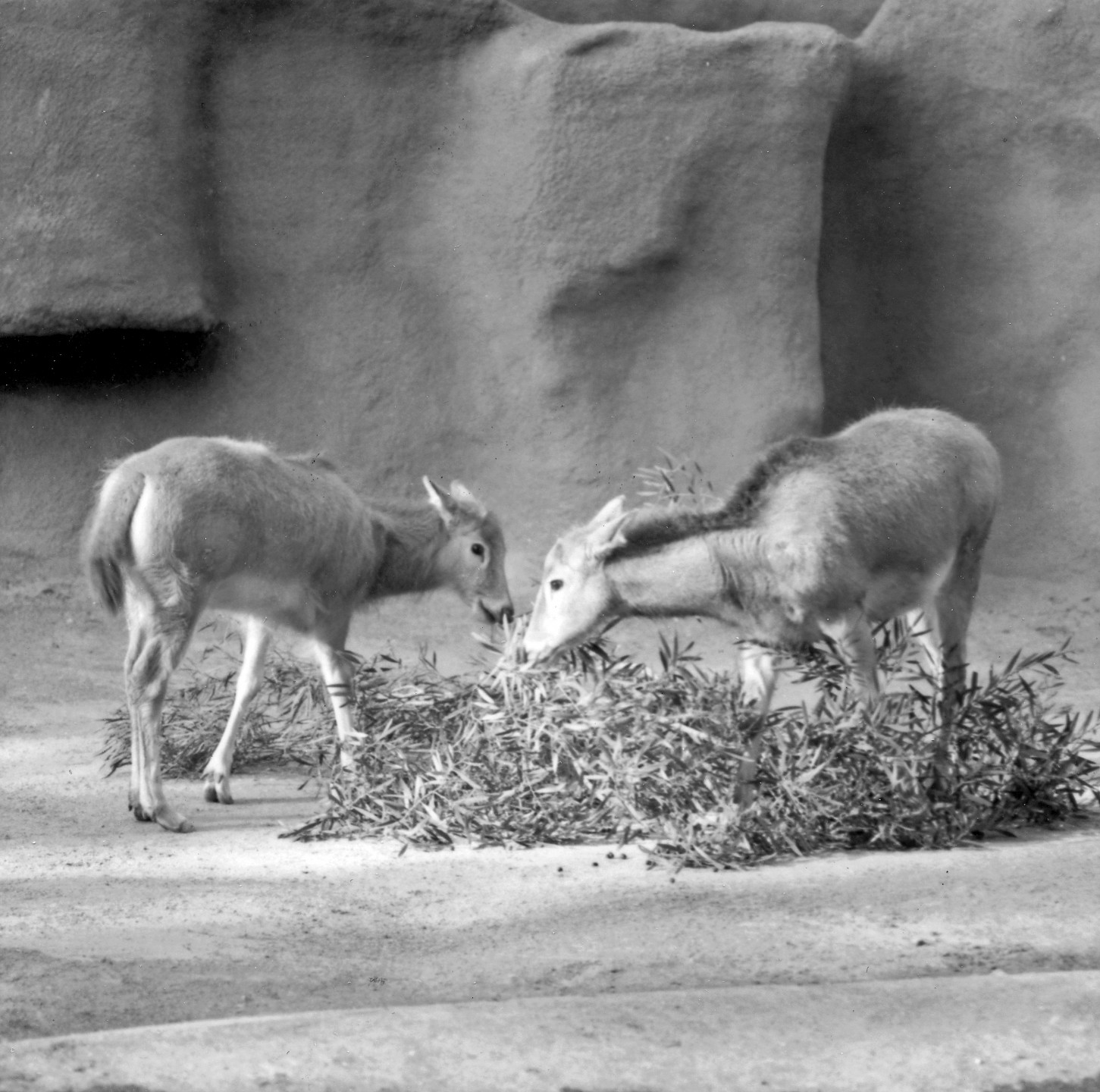
Pere David's deer is an example of a species that would be extinct if it were not for captive breeding. Originally a species native to China, it was extinct in the wild by 1122 B.C., its habitat lost to agriculture. But small herds continued to exist in the hunting parks of emperors, which a priest by the name of Pere (father) Armand David came upon in the mid 1800s. He was able to send some of the deer to zoos in Europe, where they bred successfully—which was their species' second chance to survive, because the herds in China were wiped out by floods, war, and being hunted for food. As if that weren't enough, the European herds then dwindled and were almost overcome by disease and lack of food during World War I, except for one herd maintained by the Duke of Bedford in England. In the 1940s, offspring from that herd were sent to zoos in London, New York, Sydney, and full circle back to Peking, to make sure misfortune to any one group would not mean the end of the species. With a history like that, the Zoological Society of San Diego was honored to be chosen to participate in the breeding program for these deer, and the arrival of a young male and four females was big news at the Wild Animal Park.